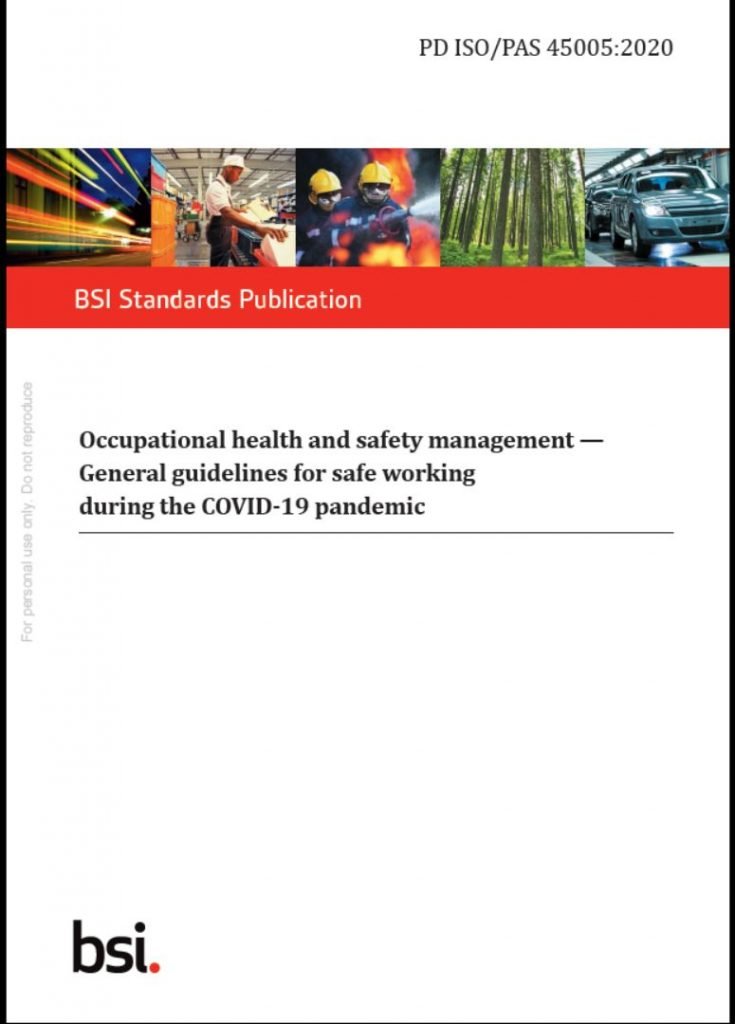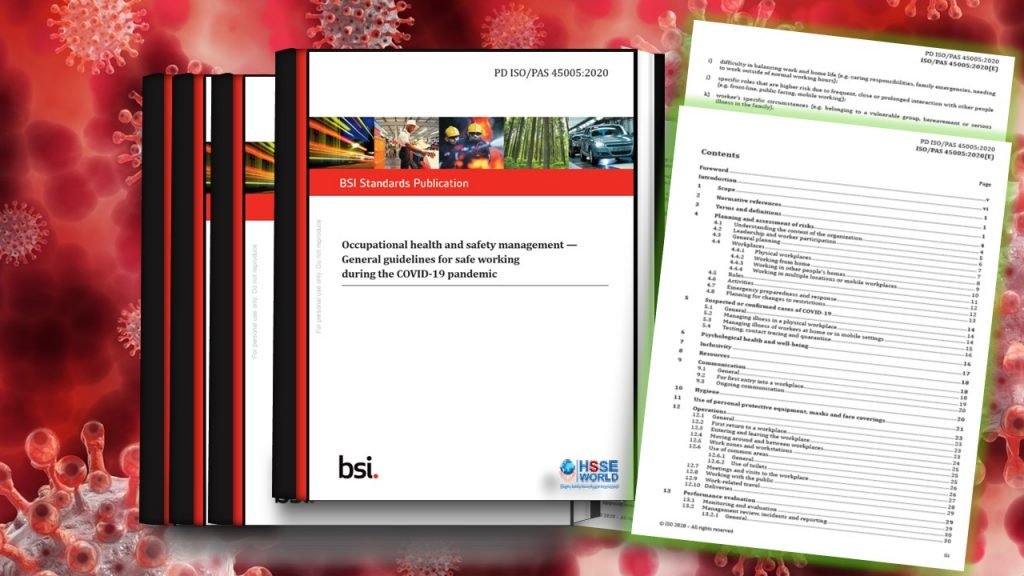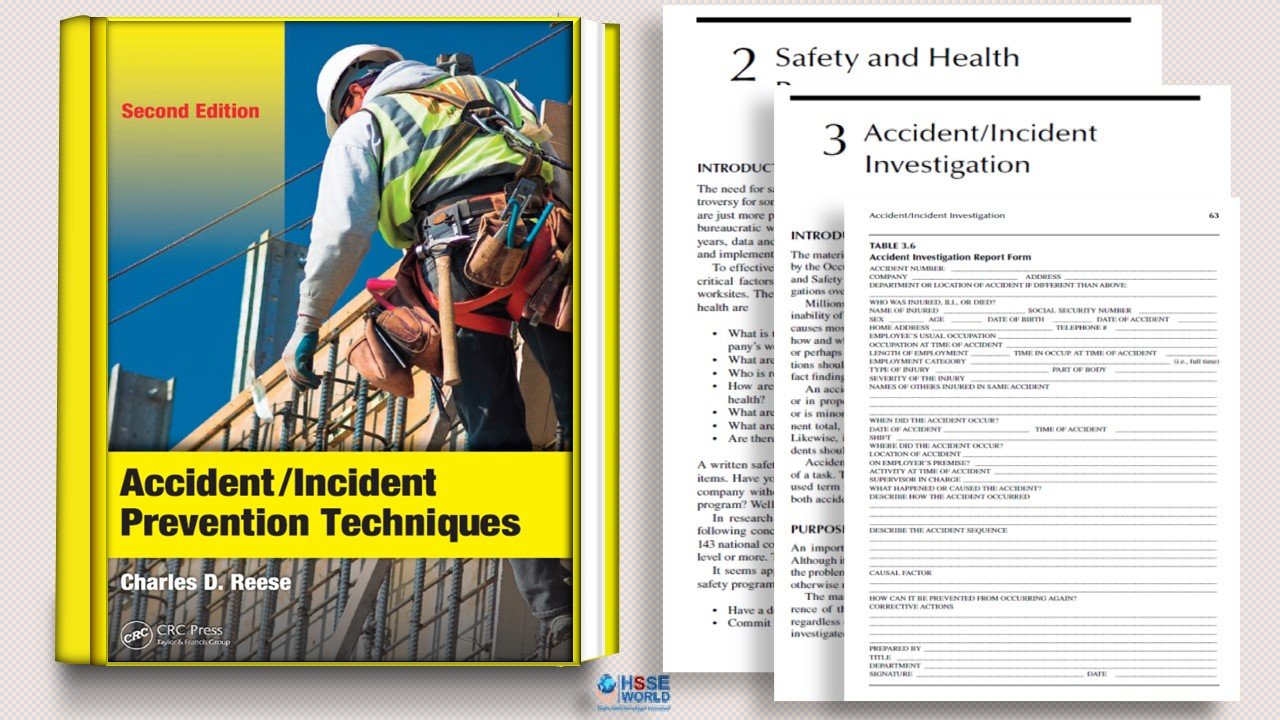This document is a response to the COVID-19 pandemic and the increased risk this disease presents to the health, safety, and well-being of people in all settings, including those working at home or in mobile settings, and workers and other interested parties in physical workplaces.
Governments, regulators, and other professional bodies across the world have published guidance on working safely during the COVID-19 pandemic. This document provides a single generic set of guidelines that complements this information and supports the principles that:
- reasonable measures to manage the risks arising from COVID-19 are, or will be, implemented to protect the health and safety of workers and other relevant interested parties.
- workers should not be required to work unless these measures have been implemented.
This guidance includes practical recommendations to organizations and workers on how to manage these risks and is suitable for organizations resuming operations, those that have been operational throughout the pandemic, and those that are starting operations.
The guidance is generic and applicable to organizations regardless of the nature of business, service provision, size, or complexity. It recognizes that many smaller organizations do not have dedicated departments for functions such as occupational health and safety (OH&S), facilities management, or human resources. More detailed information for specific functions is available from professional bodies and a wide range of national and international standards.
By implementing the guidance in this document, the organization will be able to:

a) take effective action to protect workers and other relevant interested parties from the risks related to COVID-19;
b) demonstrate that it is addressing risks related to COVID-19 using a systematic approach.
c) put in place a framework to enable effective and timely adaptation to the changing situation. Organizations using ISO 45001 can use this document to inform their OH&S management system by relating the relevant clauses to the Plan-Do-Check-Act (PDCA) cycle, as outlined below. Taking a
systems approach facilitates the coordination of resources and efforts that is so important in managing COVID-19.
- Plan: Plan what needs to be done for the organization to work safely (see Clauses 4 to 8).
- Do: Do what the organization has planned to do (see Clauses 9 to 12).
- Check: See how well it is working (see Clause 13).
- Act: Fix problems and look for ways to make what the organization is doing even more effective (see Clause 14).
This document is not intended to be a single step-by-step set of recommendations. It provides a framework in which the PDCA cycle outlined above should be repeated, with all parts active at all times, to enable ongoing continual improvement and to ensure the organization responds to changes during the different phases of the pandemic.

This document gives guidelines for organizations on how to manage the risks arising from COVID-19 to protect work-related health, safety, and well-being. This document is applicable to organizations of all sizes and sectors, including those that:
a) have been operating throughout the pandemic;
b) are resuming or planning to resume operations following full or partial closure;
c) are re-occupying workplaces that have been fully or partially closed;
d) are new and planning to operate for the first time.
This document also provides guidance relating to the protection of workers of all types (e.g. workers employed by the organization, workers of external providers, contractors, self-employed individuals, agency workers, older workers, workers with a disability, and first responders), and other relevant
interested parties (e.g. visitors to a workplace, including members of the public).
This document is not intended to provide guidance on how to implement specific infection control protocols in clinical, healthcare, and other settings.
NOTE Applicable legislation and guidance is provided by government, regulators, and health authorities for workers in these settings or in related roles.
Contents
The Contents of the Occupational health and safety management General guidelines for safe working during the COVID-19 pandemic
- Foreword
- Introduction
- 1 Scope
- 2 Normative references
- 3 Terms and definitions
- 4 Planning and assessment of risks
- 5 Suspected or confirmed cases of COVID-19
- 6 Psychological health and well-being
- 7 Inclusivity
- 8 Resources
- 9 Communication
- 10 Hygiene
- 11 Use of personal protective equipment, masks, and face coverings
- 12 Operations
- 13 Performance evaluation
- 14 Improvement
- Annex A (informative) Protective security considerations
- Annex B (informative) Accessibility and inclusion considerations
- Bibliography
Download the book
Pandemic Survival Offer: Proven Steps To Staying Safe
And Preventing Infection
There have been many lies surrounding the recent Corona Virus outbreak in the US
But this latest one really takes the cake!
Right now, it is all over the news…
And believe it puts you in lethal danger,
More Downloads
- E-Books: Healthcare Hazard Control & Safety Management
- E-Books: Safety, Health and Working Conditions Training Manual
- E-Books: Energy Efficiency in Water and Wastewater Facilities
- E-Books: Fire Service Features of Buildings and Fire Protection Systems
- E-Books: Evaluation of Fire Safety free download
- E-Books: PPE for Chemical, Biological, and Radiological Hazards free
- E-Books: Changing the Workplace Safety Culture free download
- E-Books: Site Emergency Planning Workbook
- E-Books: Load Restraint Guide
- E-Books: Essential Practices for Creating, Strengthening, and Sustaining Process Safety Culture
- E-Books: System Safety Engineering and Risk Assessment
- E-Books: Permit-Required Confined Spaces
- E-Books: Is it Safe to Enter Confined Space?
- E-Books: 5-Minute Workplace Safety Talks
- E-Books: Safety Culture and High-Risk Environments
- E-Books: Practical Guide to Industrial Safety
- E-Books: Slip, Trip, and Fall Prevention for Healthcare Workers
- E-Books: Health and Safety at Work Key Terms
- E-Books: Fundamentals of Process Safety Engineering
- E-Books: Gas Detection Hand Book
- E-Books: Occupational health and safety management systems ANSI-AIHA-z10-2012
- E-Books: Hot Work on Drums and Tanks
- E-Books: Human Fatigue Risk Management
- E-Books: Guidelines for the provision of facilities and general safety in the construction industry
- E-Books: Handbook of Training in Mine Rescue and Recovery Operations ( 2021)
- E-Books: Code of Practice for the Safe Use of Lifting Equipment – Edition 9 (Nov 2019)
- E-Books: Free Forklift Health and Safety Best Practices Guideline
- E-Books: Handbook of Hazardous Chemical Properties
- E-Books: Human Performance Improvement through Human Error Prevention
- E-Books: Principles Of Fire Risk Assessment In Buildings
- E-Books: Investigation of Occupational Accidents and Diseases
- E-Books: Radiation Protection and Safety in Industrial Radiography
- E-Books: Basic Guide to System Safety, Third Edition
- E-Books: Food Safety Management-A Practical Guide for the Food Industry
- E-Books: Safety identification: Escape and evacuation plan signs- ISO 23601
- E-Books: Safety at Work
- E-Books: The Safety-Critical Systems Handbook 4th edition
- E-Books: Fundamental principles of occupational health and safety
- E-Books: Fire Safety Risk assessment Guide – Sleeping Accommodation
- E-Books: Mental health at work series
- E-Books: Live Fire Training: Principles and Practice
- E-Books: Pre-Startup Safety Review Guide
- E-Books: Fire and Emergency Drill Manual and Building Inspection Guide
- E-Books: Health and Safety: Risk Management 5th edition
- E-Books: Fire Protection systems -Third edition 2021
- E-Books: Fire Safety Logbook templates
- E-Books: From Accidents to Zero
- E-Books: Electric Safety Practice and Standards
- Your steps to chemical safety
- E-Books: Ergonomics and Psychology Developments in Theory and Practice
- E-Books: HAZOPS Should BE fun-The Stream-Based HAZOP
- E-Books: Safety Health and Environmental Auditing
- E-Books: A Quick Guide to Health and Safety
- E-Books: Occupational Ergonomics A Practical Approach
- E-Books: Job Hazard Analysis A Guide for Voluntary Compliance and Beyond
- E-Books: Electrical Safety of Low Voltage Systems





